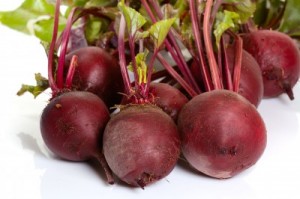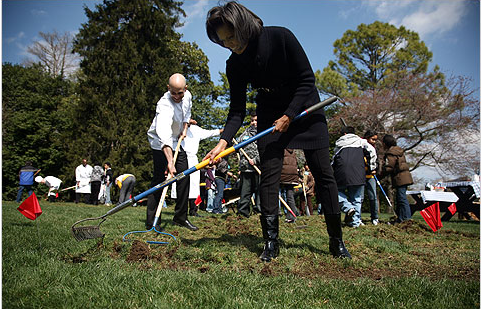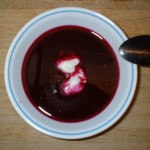By Catharine L. Kaufman—a.k.a. The Kitchen Shrink
and Dina Eliash Robinson, Editor-in-Chief
Dear President Obama:
As two of the growing number of people interested in good nutrition and a healthy environment, we are delighted by the First Lady’s decision to plant an organic garden at the White House. Press photos of Mrs. Obama digging in the soil among the new shoots with Malia and Sasha are, in fact, inspiring many of us to plant organic patches of our own.

The foodie crew here at FreeRangeClub.com is especially pleased with the cornucopia of vegetables selected for the White House garden—among them, spinach, chard, shallots, fennel and rhubarb. While we regret the absence of beets from the crop, the wives among us do understand the First Lady’s impulse to omit them in deference to your dislike of the crimson root, since we also tend to cater to our husbands’ food preferences.
There is, in fact, some scientific evidence that even the most broadminded omnivores may possess taste buds that render certain foods— whether familiar or not—unpalatable for them. (Remember former President H. W. Bush’s vehement aversion to broccoli?)
But while other cruciferous vegetables—such as cauliflower and cabbage—are good substitutes for broccoli, we know of no food that comes close to the powerful nutrients and healing qualities of what botanists call Beta Vulgaris, and the rest of us know as beetroot or beets. This super-food is an antioxidant, digestive aid and high-fiber liver-cleanser, as well as a low-calorie energy-booster. It is loaded with phosphorus, magnesium, calcium, iron, potassium, vitamins A, C and B, traces of niacin, biotin and folic acid that is essential for the production and maintenance of new cells.
phosphorus, magnesium, calcium, iron, potassium, vitamins A, C and B, traces of niacin, biotin and folic acid that is essential for the production and maintenance of new cells.
To make this health-supporting treasure trove palatable to most people, we keep searching for, and dreaming up recipes for aficionados, as well as ‘stealth dishes’ that hide the beets, transforming them into a secret ingredient that even the most discerning beet-hater’s taste buds could not detect. (As I’m sure Michelle knows only too well, the latter is an age-old trick parents develop to overcome their kids’ less than healthy food preferences.)
So, we are hereby conducting an intervention against beet-discrimination. First, we shall appeal to your curiosity, logic and open mind with a short history of this ancient wonder plant. Next we will do our best to seduce your imagination and gustatory senses with several recipes that the White House Chefs will be happy to prepare for you. We are also throwing in some horticultural tips, which might be helpful to your Gardener-in-Chief.
 Beet Story: The bulbous beauty farmers cultivate today, evolved from a wild and skinny-rooted plant that grew in prehistoric times along the Mediterranean Sea coast. Romans first ate the leaves to ward off fever—a quality found especially useful by Gladiators and other warriors. The ancient Greeks chewed the leaves to ‘cool the blood,’ although it’s not quite clear whether this referred to fever or passion. Hippocrates, known as the father of modern medicine, found that beet leaves applied as compresses and bindings helped to heal wounds. Chewing these pretty, red-veined leaves was also known as a breath-freshener—particularly useful to this region famous for its garlic-laden Mediterranean diet.
Beet Story: The bulbous beauty farmers cultivate today, evolved from a wild and skinny-rooted plant that grew in prehistoric times along the Mediterranean Sea coast. Romans first ate the leaves to ward off fever—a quality found especially useful by Gladiators and other warriors. The ancient Greeks chewed the leaves to ‘cool the blood,’ although it’s not quite clear whether this referred to fever or passion. Hippocrates, known as the father of modern medicine, found that beet leaves applied as compresses and bindings helped to heal wounds. Chewing these pretty, red-veined leaves was also known as a breath-freshener—particularly useful to this region famous for its garlic-laden Mediterranean diet.
Mythology has Aphrodite eating beets to maintain her supernatural beauty—possibly inspiring the root’s cosmetic use as cheek blush by 17th century society ladies and dandies. There might also be a link between the image of this love goddess snacking on beets and the old superstition that if a man and a woman share the same beetroot, they will fall in love.
Early Russian healers recognized the beet as a ‘miraculous’ cure for tuberculosis, scurvy and toothaches. In Africa, it is still known as an antidote to cyanide poisoning. It took centuries before the beetroot grew plump and succulent enough to be regarded as an Epicurean delicacy. In Charlemagne’s empire beets became a chic side-dish and soon every reputable French garden was festooned with rows of deep green, red-veined leaves, below which grew the luscious root. As the popularity of beets grew, they were transported northward and grown first in Germany (as the “Roman Beet”) then in the rest of Europe and on across the English Channel, until the root found its way to the New World.
The beetroot’s medicinal history includes ongoing research into its many uses. Hungarian scientists have recently discovered that some of its ingredients can inhibit the growth of cancerous tumors. Other health practitioners have reported its successful use in the treatment of patients with leukemia and several different blood diseases. Some homeopaths have found beet diffusions effective in skin applications against acne, abscesses and boils.
In the realm of mind-body connection, beets as food have great emotional effect on some people. In both the authors’ lives, that emotion is now mostly nostalgia. Our European roots—Catharine’s Russian—Belgian and Dina’s Transylvanian-Hungarian—we have memories of our Grandmothers’ beet soup, known as borscht. This is served cold, as a refreshing summer dish, with a dollop of chilled sour cream floating on top; and steaming hot in the winter, with big chunks of boiled potatoes transforming it into a cozy comfort food.
 If any of the above made you look at beets in a new light, we can foresee many fresh dining pleasures in your future. Or at least, we hope you have found the information enlightening and entertaining. You never know when it might come in handy…
If any of the above made you look at beets in a new light, we can foresee many fresh dining pleasures in your future. Or at least, we hope you have found the information enlightening and entertaining. You never know when it might come in handy…
*****************
The following TIPS about growing, preparing and cooking beets might be of interest to the First Lady, her garden assistants and, especially, to your White House chefs and other kitchen staff.
Growing beets:
1. Best planted and grown in cool (not cold) weather, in loose, moist soil.
2. Beets require 60 to 70 days from planting to harvest.
3. Beets do not tolerate acidic soils and require large amounts of potash for root formation.
4. Beet varieties include the common, dark-red Burpee’s Red Ball, Cylindra, Detroit Dark Red and the top quality Ruby Queen; as well as baby beets (favorites of gourmet restaurants) and white, candy-striped and golden yellow species that are decorative, but lack the red (anti-cancer) pigment betacyanin.
Selecting, handling and preparing beets:
1. Whether picking from your own garden or buying from produce vendors, it is best to select medium size, red beets that have taut skin and are as free of blemishes or soft spots as can be found. Make sure to choose beets with healthy stalks (red) and leaves (green with red veins) attached.
2. Fill a bowl that is large enough to accommodate the beet bunch with cold water. Add 2-3 generous squirts of liquid Pure-Castile Soap (with Eucalyptus) to the water and immerse the entire plant (the stalks can be bent or snapped if necessary). With a sponge or Dobie pad, scrub the bulbs vigorously to clean off all dirt and wash the stalks and leaves more gently by hand. Rinse the beets off in a bowl of clean water. Cut leafy stalks off, rinse them under running water and set aside in a colander. Peel the beet bulbs and rinse.
3. It’s best to wear rubberized gloves to prevent staining, as well as an apron or other protective clothing.
4. If the beets are not prepared or cooked right away, they should be tightly wrapped in plastic wrap or bag, secured by a rubber band, and stored in the refrigerator’s crisper drawer—where it will keep fresh for about 3 days.
Note: Organic beets and recipe ingredients are recommended.
A) Beet recipes for beet lovers:
1) Blood Orange Roasted Beet Salad: You can actually taste spring in Catharine’s friend Megan Reichman’s recipe. As the Chef of the San Diego Paradise Point Resort’s famed Baleen seafood restaurant, Megan keeps diners coming back for her mouthwatering creations.
2 medium beets
1 cup of baby lettuce (preferably the delicate “mache”)
2 tablespoons of toasted pine nuts.
Dressing:
¼ cup of blood orange puree
2 tablespoons rice wine vinegar
1 teaspoon whole grain mustard
2 teaspoons honey
½ shallot
1 cup of grape seed oil
salt and pepper to taste
Marinade:
¼ cup roasted beet scraps
½ shallot
3 teaspoons whole grain mustard
3 teaspoons honey
¼ cup red wine vinegar
salt and pepper to taste
• Cover the bottom of a pan with about ½ inch of water, place the beets in, cover the pan and roast the beets at 350 degrees F., until soft but firm.
• Dice beets, reserving a few slices for the marinade.
• Puree the marinade ingredients in a blender, slowly adding a stream of oil to emulsify.
• Repeat the procedure for the dressing.
• On a salad plate, layer the beets and the marinade.
• Toss the baby lettuce (mache) in the dressing and spoon it on the salad.
• Sprinkle the pine nuts over it.
2) Beet soup—or Borscht: A traditional and versatile dish brought to America by Eastern European immigrants. Since borscht keeps well in the refrigerator for a week or more, and is both served as a soup and sipped as a juice-like beverage, it is often prepared in large enough quantities for multiple meals. The quantities listed below are for at least two meals for a family of four.
3 medium-size beets, with leafy stalks cut off but included
10 cups filtered water
4 tablespoons organic apple cider vinegar
1 tablespoon honey or agave nectar
1 tablespoon brown (raw) sugar
salt to taste
–To be added at the table:
For cold borscht—about 1 tablespoon organic sour cream or plain (unflavored) yogurt (regular, low- or non-fat) per soup bowl.
For hot or warm borscht—1 medium size boiled potato, cut into quarters, peeled or with skin on.
• Wash, peel, cut and prepare beets as instructed above.
• Place in deep pot, making sure the filtered water covers them.
• Cover the pot and cook on high heat until it begins to roil, then turn heat down to medium.
• From time to time, stick large fork into the thickest part of the beets and stalks to check if they are soft enough to purée.
• When ready, remove pot from heat and strain liquid into a big glass or porcelain bowl, leaving the beets and stalks in the colander.
• Run the latter through a food processor or blender until completely puréed and add to the liquid, mixing it well to integrate.
• In a separate glass container, mix the apple cider vinegar, sugar, honey (or agave nectar) and salt, while slowly drizzling about a cup of the hot beet liquid into the mix to dissolve the sugar and honey faster.
• Add this mixture to the beet liquid, mix until the ingredients are completely dissolved and adjust the tart-sweet balance to pleasing taste. Borscht is now ready to serve.
• At the table, add sour cream or yogurt—about one tablespoon per bowl, more or less—to COLD borscht, for a richer flavor.
• When hot borscht is served, place a medium size (warm) boiled potato, cut into quarters (peeled or with skin on) into each person’s bowl and ladle the steaming liquid over it.
• Some people insist on having both potato and sour cream (or yogurt) in both hot and cold borscht. It’s best to indulge us… er… them.
B) Stealth Dishes for the Beet-Averse:
1) Rainbow Mashed Potatoes—serves 4+:
4 medium size potatoes (red-skin variety recommended)
1 small sweet potato
1 medium size beet
¾ of a medium size red onion
3-4 cloves of fresh garlic
1 cup sweet peas
½ teaspoon sweet red paprika
½ teaspoon chopped fresh or dry basil leaves
¾ cup of extra virgin olive oil
¼ cup vegetable broth
salt and cayenne pepper to taste
• Scrub and wash potatoes, sweet potato and beet.
• Boil potatoes with skins on in enough water to cover them.
• Boil beet separately in little water and peel as soon as it is soft enough to purée.
• Peel and chop the onion and garlic.
• In a large skillet, sauté the onion in olive oil until it begins to turn golden, then add the chopped garlic and continue sautéing until it begins to cook. Remove from heat.
• Pour vegetable broth into a small bowl, stir in paprika, salt, cayenne pepper and basil and add this mixture slowly to the still hot oil-onion-garlic mix, stirring well before covering to keep it warm.
• Mash (peeled or not) potatoes and sweet potato—though it’s best to mash the beet separately; then blend them together and stir in the above mixture thoroughly.
• Place in serving bowl and spread the peas on top before serving.
(I dare anyone to discern the taste of beets in this dish.)
2) Apricot Beet Smoothie
6 ounces of plain or vanilla yogurt
1/3 cup freshly prepared, raw beet juice
½ cup (more or less, to preference) crushed ice
1 heaping tablespoon of peach or apricot preserve
1 medium size banana
Optional–whipped cream or scoop of peach, banana or vanilla sorbet or other frozen dessert.
A mix of peach or apricot slices (dried or fresh) and walnuts
• Place in blender yogurt, beet juice, crushed ice, peach or apricot preserve and banana.
• Whip to smoothie consistency and pour into tall glasses. Add decorative or plain straws.
• Optional—top smoothie with a dollop of whipped cream or frozen dessert, as preferred.
• Serve with fruit and nuts mix on the side.
3) Beet Burger A-Go-Go—Makes 6 burgers.
¾ cup brown rice (cooked)
¾ cup barley (cooked)
¼ cup roasted and diced beets
½ small red onion, diced
½ sweet red pepper, diced
8 ounces fresh mushrooms, wild or white button, chopped
2 garlic cloves, minced
1 teaspoon of Worcestershire sauce
1 tablespoon tomato sauce (Newman’s Own Organic spaghetti sauce with mushrooms is excellent)
2 eggs, beaten
4 tablespoons olive or grapeseed oil
2 tablespoons fresh chopped herbs (preferred choices may include single herbs, or combinations that complement each other, as: thyme with rosemary; basil with Italian parsley; tarragon with parsley; dill with oregano; etc.)
Salt and cayenne pepper to taste (careful, the latter is hot!)
Panko breadcrumbs
• On medium heat, warm up one tablespoon of the oil in a large frying pan and sauté the onion, pepper, mushrooms, herbs and garlic until tender.
• Combine the roasted and diced beets, cooked rice and barley with the sautéed vegetables and mix well.
• Blend the eggs and sauces, salt and cayenne into the mixture until the texture is firm and holds together.
• Form into patties, adding breadcrumbs for desired texture.
• Line a baking sheet with parchment paper and coat with a thin layer of grapeseed oil.
• Place Beet Burgers on the parchment, spacing them about ½ inch apart.
• Heat oven to 400 degrees F and bake burgers until crisp—turning them only once.
• Toast whole wheat, spelt or quinoa buns, apply a thin layer of mayonnaise flavored with rosemary and garlic—or mustard, if you prefer.
• Garnish buns with arugula or micro greens, heirloom tomatoes and/or thinly sliced raw red onions, making a rich-flavored bed for your Beet Burger A-Go-Go.
(NOTE: Anyone who, without prior knowledge about the presence of beets in the above three recipes, is still able to detect their flavor, should be awarded a prize.)
BON APPÉTIT.
